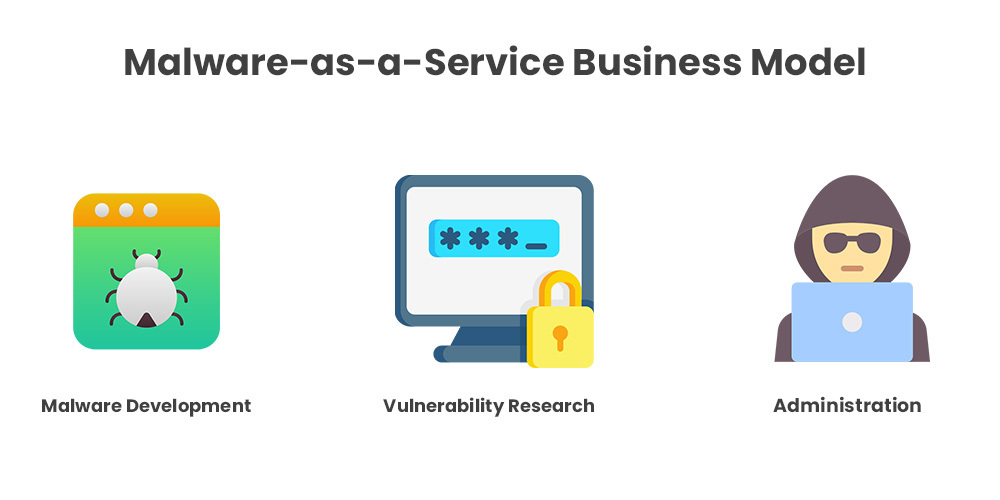Malware as a Service is one of the services offered by the Cybercriminal service industry (MaaS). Anyone may launch a significant malware attack thanks to Malware as a Service, even those with little to no technical skills or experience. The customer rents access to a botnet, which is a group of computers that have been infected with malware or subjected to credential stuffing attacks and are compelled to carry out the attacker’s instructions. The purpose of this rented botnet is to search the Internet for systems that could be attacked by taking advantage of known vulnerabilities.
After identifying a machine that is susceptible, the botnet uses the disclosed vulnerability to automatically deliver and install malware on the machine using its access. Once the infection is put in place, the botnet owner benefits from the malware by stealing confidential information, putting ransomware in place, or conducting other attacks.

As the malware market has risen, so has an interest in botnets. A compromised computer network is known as a botnet. Bots can be used to mine cryptocurrencies, crack servers, send millions of spam emails, store illegal materials, operate a side business, and more. The main issue is that most people are unaware that their machines are infected.
Some claim that botnets are nothing new and have been around for a very long time. True, but the main problem is how they have drastically changed recently. Back then, a hacker had to build a botnet from scratch in order to commit a crime.
Methods of Malware-as-a-Service Distribution:
Here are a few of the methods MaaS platforms use most frequently to spread malware.
- Arrangements through email: Many of these services rely on email methods to exploit vulnerable systems. They send emails with embedded links to risky websites to unintentional recipients. When a victim clicks on the link, the infection chain is set in motion. Malware typically begins by writing firewall exceptions and commencing obfuscation activities before searching for vulnerabilities on the computer. Usually, the main objective is to damage the CPU’s core portions. Once the initial infection is successful, other malware can be downloaded onto the system. The compromised device can also be connected to a MaaS-controlled botnet.
- Malvertising: Ad networks are used by malvertising which inserts harmful code into adverts, to disseminate worms. The malware infection sequence is launched each time the ad is viewed on a device that is susceptible.
The malware is typically housed on a remote site and set up to utilize crucial browser functions.Advertising networks mainly rely on automation to display hundreds of advertisements at once, making it challenging to terminate malvertising operations. Additionally, the displayed advertising rotates every few minutes. This makes it challenging to identify the particular advertisement that is causing problems. This weakness is a major factor in why MaaS networks favor malicious advertising efforts. - Downloads via torrent: Torrent websites are being increasingly used by hackers to spread malware. Hackers frequently upload infected copies of well-known films and video games to torrent networks as part of viral campaigns. The coronavirus epidemic, which caused a rise in downloads, marked the top of the trend. It was found that a significant portion of the files posted on the websites contained ransomware, bitcoin miners, and other malicious software designed to compromise system security.




